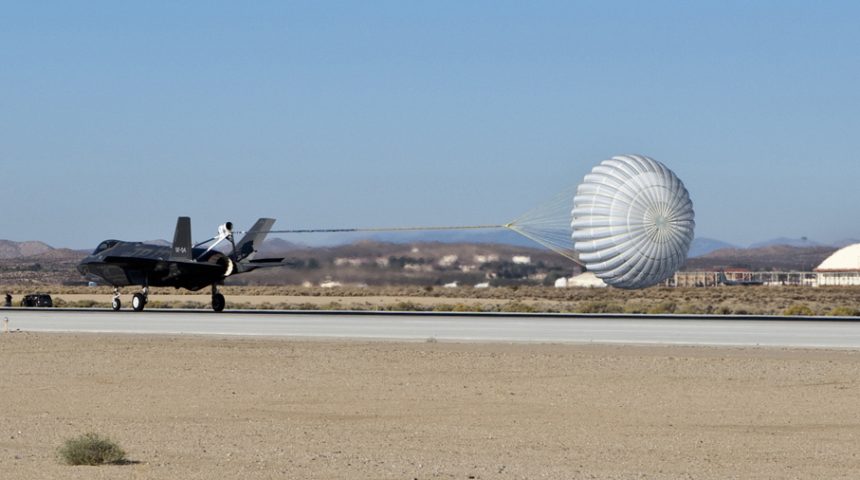This device was particularly important to develop one of the most important capabilities of the F-35.
As explained by Major Morten “Dolby” Hanche, a Royal Norwegian Air Force test pilots with 100 hours in the F-35, currently serving as an instructor and as the Assistant Weapons Officer with the 62nd Fighter Squadron at Luke Air Force Base in Arizona, the JSF is not that bad at 1 vs 1 dogfighting.
And one of the most positive characteristics of the F-35 is the ability to fly at high AOA (Angle of Attack), even higher than the F-16.
“The F-35 provides me as a pilot greater authority to point the nose of the airplane where I desire. This improved ability to point at my opponent enables me to deliver weapons earlier than I am used to with the F-16, it forces my opponent to react even more defensively, and it gives me the ability to reduce the airspeed quicker than in the F-16. […] Defensive situations often result in high AOA and low airspeeds. At high AOA the F-16 reacts slowly when I move the stick sideways to roll the airplane. The best comparison I can think of is being at the helm of ship (without me really knowing what I am talking about – I’m not a sailor). Yet another quality of the F-35 becomes evident in this flight regime; using the rudder pedals I can command the nose of the airplane from side to side. The F-35 reacts quicker to my pedal inputs than the F-16 would at its maximum AOA (the F-16 would actually be out of control at this AOA). This gives me an alternate way of pointing the airplane where I need it to, in order to threaten an opponent. This «pedal turn» yields an impressive turn rate, even at low airspeeds. In a defensive situation, the «pedal turn» provides me the ability to rapidly neutralize a situation, or perhaps even reverse the roles entirely.”
Some of you may remember the F-35A AF-4 test plane with a weird white structure between the tails.
That was the spin recovery system, a safety device that was first deployed on a ground test at Edwards Air Force Base, California, on Oct. 20, 2012 and was then used in high angle of attack flight tests.
That was one crucial system that helped the F-35 achieve higher AOAs and be a better fighter. In fact, the high angle of attack testing was accomplished by intentionally putting the aircraft out of control in several configurations. All tests, including those performed with external loads, could be safely performed thanks to the spin recovery chute that would have helped stabilize the plane in case it could not be recovered from out of control conditions with the only use of the flight controls.
Lockheed Martin test pilot David Nelson was at the controls of F-35A AF-4 for the first deployment ground test on Runway 22 at Edwards AFB.
The following video shows the ground tests:
In the same period, a similar system aimed to prevent the skydiver from experiencing extreme G-loads, was reportedly embedded in the special flight suit of Felix Baumgartner back in 2012. The system would deploy a drogue chute if Baumgartner got into an uncontrolled spin during his supersonic skyjump.
Here’s a video of the F-35 performing high-AOA tests.
Image credit: Lockheed Martin









